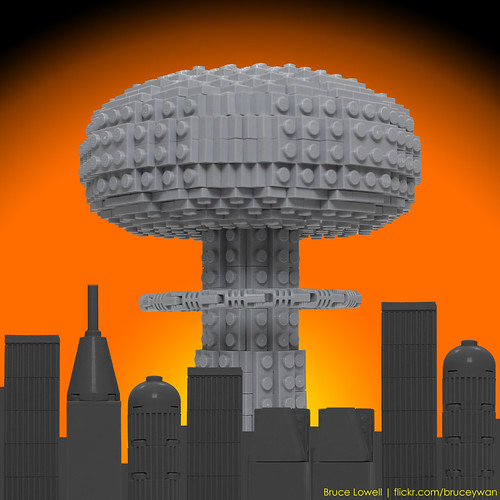
Sunday, January 1, 2012
Boom
We all recognize a mushroom cloud (here in LEGO by Brucey-Wan) as the result of an atomic explosion. A radioactive element is one that is unstable due to the ratio of protons and neutrons in the nucleus. These atoms fall apart, often emitting small subatomic particles. If you have a high enough concentration of unstable atoms (i.e. critical mass), these subatomic particles can ram into other radioactive nuclei, causing them to break apart just like hitting the cue ball into a rack of balls at the start of a game of pool. This breakdown (fission) leads to more subatomic particles being spit out, which run into more nuclei, and again and again and again, a chain reaction. At each fission event a small amount of energy is given off, but as the chain reaction proceeds, a huge number of atoms break down in a very small time, and the huge amount of energy given off is the atomic explosion. This energy superheats the air, which expands with explosive force as the blast. At the center of the blast, this hot expanding air rises straight up, and this creates a wind coming in and up that pulls up dust and debris from the ground. When this reaches a high enough elevation, hitting much cooler air, the cloud stops rising and mushrooms outward. This cloud also contains radioactive elements blown apart in the initial atomic blast, and this dust settling back to earth is the radioactive fallout.


Labels:
physics
Subscribe to:
Post Comments (Atom)
No comments:
Post a Comment